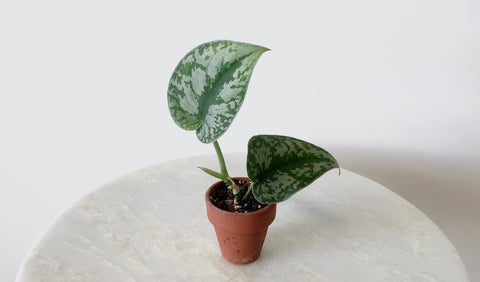How to Propagate Your Indoor Plants Via Cuttings

Through the process of propagation, you can create new plants out of existing ones. Adding extra foliage without ever leaving your house is simple, rewarding, and best of all, free. The method of propagating can vary between types of plants, but we will focus on one of the most common ways— cuttings. Cuttings involve removing a piece of a parent plant in order to regenerate that piece into a whole new plant.
Propagation Background

Dating back centuries, propagation has been used as a means to create and share flora throughout the world. But it’s important that we’re aware of the types of plants we’re propagating as some methods simply won’t work for certain plants. In addition, the variety of plant is important for understanding if propagating it is considered legal. Typically, propagating plants for yourself at home is fine— but some patented varieties have restrictions, especially when we plan to share/sell our freely propped plants. Beyond patented plants, also be aware of ‘prop-lifting’— which is the act of taking plants from the community or from the wild. In the wild, certain plants are protected due to environmental fragility. These plants should stay in nature for the benefit of not only the plant, but for the planet too! Always do your research first.
Houseplant Cuttings 101

The most popular and approachable method of propagation is rooting plants via cuttings. This method requires very little effort— no unplanting and no getting dirty. All you have to do is clip off a specific section of the plant stem (again depending on the type of plant). Then the plant clippings are placed in water or soil to develop roots. And whether water or soil, the method is mostly the same and pretty straightforward.
Stem cutting propagations are viable for herbaceous plants. For instance most vining plants like Pothos, Ivy, Monstera adansonii, and Scindapsus can be recreated via clippings. Propagation can also be achieved with tip cuttings in plants like Aglaeonema, Begonia, Croton, Fittonia, Hoya, Peperomia, etc.

- Step 1: Get your healthy plant and sterilized scissors ready.
- Step 2: Identify the area that you’re going to cut. If you’re working with a vining plant, look for the slightly pointy nodes (where stem and leaf fuse). Cuttings should be about 4 inches in length to ensure viability. With vining plants, cut right below the node. With woody plants that require tip cuttings, again cut a piece about 4 inches from the top (including at least 2 leaves).

- Step 3: Remove any lower leaves that will be in the way, so that only stem will be submerged in water/soil.
- Step 4: Place the cutting right into a vase of water, ensuring that the leaf node is completely submerged. If using soil, dip the end of the cut edge into a powder rooting hormone then plant into the soil.

- Step 5: Location. Make sure your cutting is exposed to similar conditions that the plant normally would. It will prefer and thrive with the same amount of sunlight as the mother plant would. Typically for indoor plants, that means moderate, but indirect sunlight.
- Step 6: Check back in over the next few days and weeks. If you use the water method, make sure to refill as necessary because the water level will lower.

- Step 7: Again if you used the water method, check for roots that may start to develop after a couple of weeks. Once the roots are at least 2 inches in length, pot the cutting into soil.
- Pro tip: When planting any plant, make sure that proper soil amount is used. So when planting a cutting, provide a container with enough soil to cover the roots completely-- but never too large or too much soil. Usually this means a small (couple of inches) pot. If potting several leaf cuttings into one vessel, a 4 inch pot will usually work. The plant will thrive when provided the right size, and remember to repot when roots start to creep out of the bottom of the pot (unless of course that particular plant prefers to be rootbound).

Propagating through cuttings can have very vast time differences depending on the type of plant. For instance a pothos in the right conditions can experience roots developing within a few days, while more woody plants (like a rubber plant) may not see root activity for weeks. In addition, the time of year can affect propagation. A quick search for your specific plant can help you determine what season is best for propagating.
The process can be one of trial and error, so keep in mind that it may not always work. But with the right tools, method, and patience, you’ll be able to create extra green in no time.
Shop plants you can propagate here.
@outsideinco Propagating Satin Pothos Step-by-Step ##satinpothos ##propagate ##houseplantsoftiktok ##indoorplanttips ##planttutorial
♬ Up Beat (Married Life) - Kenyi